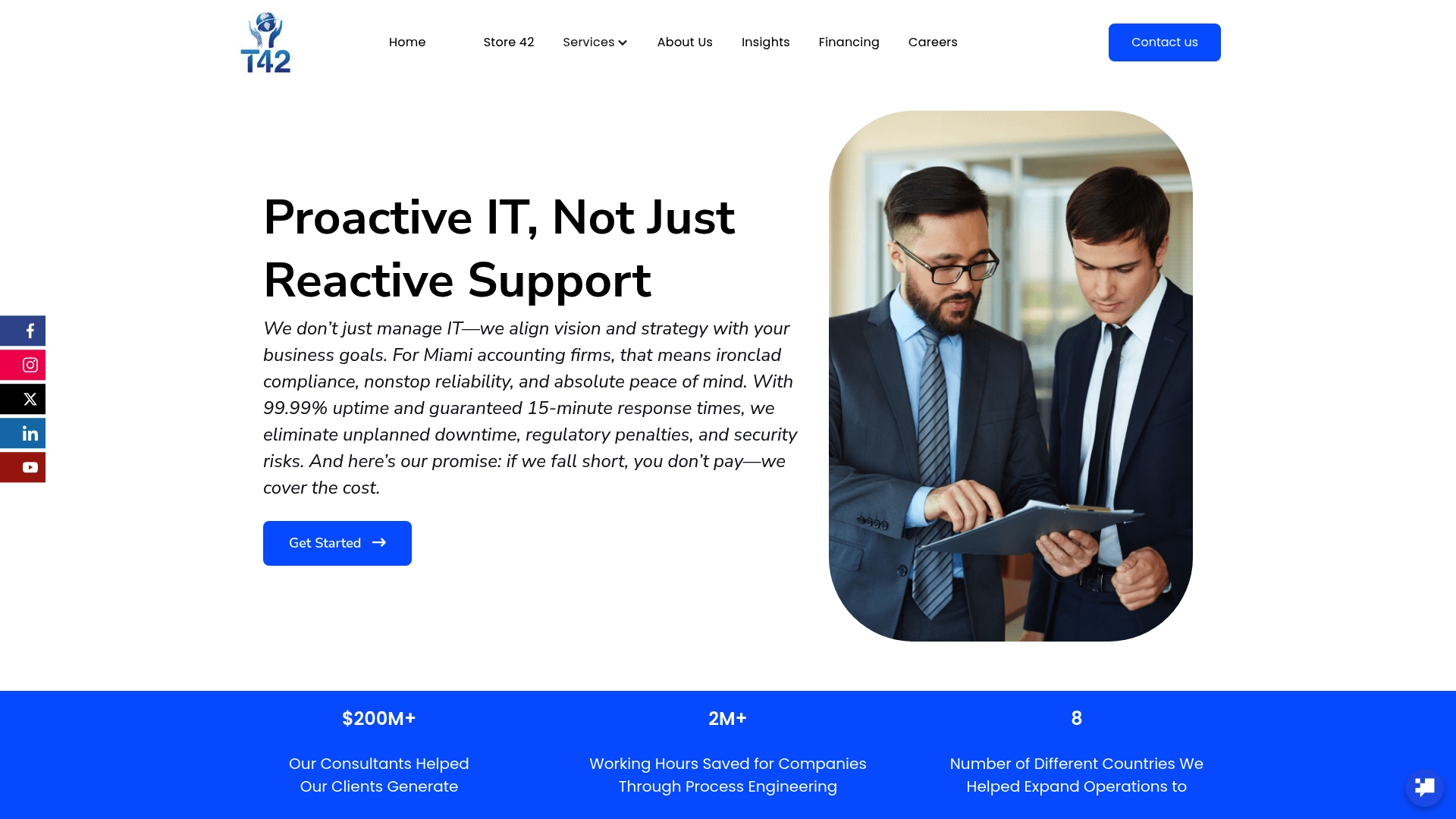
Did you know that accounting firms can save up to 40 percent of their time by automating repetitive tasks? Manual processes slow down growth and create room for costly errors. Modern automation can turn your daily grind into a streamlined workflow, giving you back more hours for client service and strategic planning. Discover practical steps to identify, implement, and maximize automation so your Miami accounting practice works smarter and stays ahead.
| Key Point | Explanation |
|---|---|
| 1. Identify Tasks for Automation | Focus on repetitive, rule-based tasks that consume time, such as data entry and invoice processing. |
| 2. Select Suitable Automation Tools | Choose tools like RPA and BPM that fit your needs, considering their integration and scalability with existing systems. |
| 3. Start with Small Pilot Projects | Implement automation in a few key areas first to test effectiveness before expanding it across your practice. |
| 4. Monitor and Test Automated Processes | Consistently evaluate the performance of automated tasks to ensure accuracy and compliance with financial regulations. |
| 5. Optimize Continuously for Improvement | Regularly assess automation results and fine-tune processes to enhance efficiency and adapt to changing needs. |
Let’s start by getting real about your accounting workflow. This step is about finding those repetitive tasks that are eating up your precious time and creating opportunities for smart automation. You want to target processes that are consistent, rule-based, and currently slowing down your practice.
First, grab a notebook or fire up a spreadsheet and start mapping out your daily operations. Think about tasks like client onboarding, invoice processing, expense tracking, and tax preparation. According to research from UMA Technology, the best candidates for automation are workflows that are:
Common examples in accounting include data entry, payroll processing, client document collection, and standard approval workflows.
Walk through each process and ask yourself: How many manual steps are involved? How long does this take me every week? Where are the bottlenecks?
Pro Tip: Document every single step of these processes. The more detailed your workflow map, the easier automation becomes.
Remember that not everything needs automation. Focus on tasks that drain your energy and take you away from high-value strategic work with clients. In the next section, we’ll dive into evaluating which specific processes make the most sense to automate for your Miami accounting practice.
Now that you have identified your processes ripe for automation, it is time to find the right technology to transform your accounting practice. Think of this step as selecting the perfect set of digital tools that will supercharge your workflow and free you from mundane tasks.
According to research from Chief Operating Officer, there are key technologies designed specifically for process automation. For accounting firms, you will want to focus on two primary types of tools:
Here’s a comparison of leading automation tools for accounting firms:
| Tool Type | Example Tools | Best For | Key Features |
|---|---|---|---|
| Robotic Process Automation (RPA) | UiPath Automation Anywhere |
Data entry Invoice processing Standard workflows |
Rule-based automation Integration support High scalability |
| Business Process Management (BPM) | Pegasystems | Complex process design Workflow integration |
Custom process mapping Process monitoring Automation orchestration |
These technologies excel at handling repetitive rule-based tasks that consume hours of your workweek.
 RPA tools can automate data entry, invoice processing, and standard document workflows. BPM platforms help you design more complex interconnected processes across your practice.
RPA tools can automate data entry, invoice processing, and standard document workflows. BPM platforms help you design more complex interconnected processes across your practice.
Pro Tip: Before investing, request demos and free trials. Test how each tool integrates with your existing accounting software and workflow.
As recommended by the Colorado Society of CPAs, focus on tools that help you become more competitive and agile. Look for solutions that offer clear decision criteria and can demonstrate tangible efficiency gains.
In our next section, we will explore how to strategically implement these tools to maximize your accounting practice’s productivity.
With your processes mapped and tools selected, it is time to bring your automation strategy to life. This step is about transforming those manual workflows into efficient digital processes that will save you countless hours of repetitive work.
According to research from UMA Technology, developing automation workflows requires collaboration with IT teams or automation vendors. The key is to replicate your existing manual process steps using intuitive drag-and-drop interfaces that make creating automation scripts straightforward.
Start by focusing on core business areas where automation can make the most immediate impact:
As recommended by the Digital Government RPA Playbook, pay close attention to critical implementation elements like scheduling automations, managing software licenses, and establishing error monitoring protocols.
Pro Tip: Begin with small pilot projects. Select one or two processes to automate completely before scaling across your entire practice.
Remember that successful implementation is an iterative process. You will need to test, refine, and continuously improve your automated workflows. In the next section, we will explore how to measure the effectiveness of your new automation strategy.
As you prepare to bring new automation tools into your accounting practice, security becomes your top priority. This step is about ensuring your digital transformation happens smoothly without compromising your sensitive financial data or client information.
According to UMA Technology, selecting the right automation tools requires careful consideration of several key factors:
The Digital Government RPA Playbook emphasizes designing streamlined security processes that allow you to deploy automations safely and rapidly. This means working closely with your IT team to establish robust integration protocols.
Pro Tip: Always conduct a comprehensive security assessment before fully implementing any new automation solution. Test integration points thoroughly and create backup systems.
Consider working with your existing software vendors to understand potential integration challenges. Some accounting platforms offer native automation features that can seamlessly connect with your current workflows. If you are working with third party tools, ensure they provide enterprise grade encryption and compliance certifications relevant to financial data protection.
In our next section, we will explore how to train your team and manage the transition to these new automated systems.
You are now at the critical stage of validating your automation strategy. This step is about ensuring your new digital workflows perform exactly as expected while maintaining the highest standards of accuracy and regulatory compliance.
According to UMA Technology, thorough pilot testing is essential to identify potential bugs or inefficiencies. Your goal is to validate whether the automated processes meet your predetermined objectives and key performance indicators.
Start by creating a comprehensive testing strategy that covers multiple scenarios:
The Digital Government RPA Playbook recommends developing robust monitoring processes for scheduling automations, managing system capacity, and quickly addressing any error scenarios.
Pro Tip: Document every test result meticulously. Small discrepancies can reveal important optimization opportunities.
Remember that compliance is not a one time checkbox. Continuously review your automated systems against current financial regulations and industry standards. This ongoing diligence will protect your firm from potential legal and financial risks.
In our final section, we will discuss strategies for scaling and continuously improving your automation implementation.
Congratulations on implementing your first automated workflows. Now begins the most critical phase transforming your initial automation effort into a long term strategic advantage for your accounting practice.
According to UMA Technology, ongoing optimization is key. You will need to periodically evaluate performance against your established key performance indicators and continuously refine your automation strategies.
Focus on developing a systematic approach to tracking and improving your automated processes:
The Digital Government RPA Playbook recommends creating operational metrics and business case models that help you drive continuous measurement and impact analysis.
Pro Tip: Schedule quarterly reviews of your automation performance. Technology evolves quickly in accounting software.
Remember that automation is not a one time project but an ongoing journey of incremental improvements. Stay curious experiment boldly and always be ready to adapt your strategies as your accounting practice grows and technology advances.
By maintaining this proactive approach you will ensure your firm remains at the cutting edge of accounting technology and efficiency.
The article highlights the challenge Miami accounting firms face in automating repetitive, rule-based workflows like invoice processing and tax document management. These manual tasks consume precious time and introduce costly errors that pull you away from strategic client work. You need ironclad compliance and nonstop reliability in technology to confidently integrate automation tools while safeguarding sensitive financial data.
Our team understands the urgency to move beyond manual bottlenecks. With 99.99 percent uptime and guaranteed 15 minute response times, we eliminate downtime and security risks that can derail your automation efforts. Whether you are just starting to evaluate suitable tools or ready to implement and secure automated workflows, partnering with us ensures your technology aligns perfectly with your goals.

Don’t let unreliable IT infrastructure hold you back from maximizing your firm’s efficiency and accuracy. Discover how Transform42 supports Miami accounting practices with tailored IT solutions built for process automation success. Visit our homepage now and take the first step toward scalable, secure automation that grows with your firm.
To identify suitable processes for automation, map out your daily operations and focus on tasks that are repetitive, rule-based, and time-consuming. Document each process in detail and seek out steps that slow down your workflow, such as data entry or invoice processing.
Miami CPAs should consider Robotic Process Automation (RPA) and Business Process Management (BPM) tools. RPA tools excel at handling repetitive tasks like data entry, while BPM platforms help to design complex workflows. Start by exploring tools that match your specific automation needs.
To implement automation workflows, begin by selecting core business areas, such as client onboarding or invoice processing, where automation can provide immediate benefits. Develop automated processes using intuitive software and run pilot projects to test their efficiency before wider rollout.
When integrating automation tools, prioritize security by ensuring compatibility with existing systems and leveraging vendor support for secure protocols. Conduct comprehensive security assessments and validate that tools offer encryption and compliance features relevant to your financial data protection needs.
Measure the success of your automated processes by establishing key performance indicators (KPIs) like time saved, error reduction, and cost efficiency. Review these metrics periodically to analyze performance and identify bottlenecks for improvement, ideally within a quarterly review cycle.
Continuously optimize your automation strategy by regularly tracking performance metrics and gathering feedback from your team. Set benchmarks to compare efficiency gains and adjust processes as needed to enhance effectiveness and maintain a competitive edge over time.